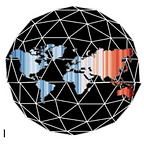The projected global sea-level rise by 2050 is 10–20 inches, according to the latest scientific assessments. This is based on current levels of greenhouse gas emissions and the expected melting of glaciers and ice sheets.
However, it is important to note that these are just projections, and the actual amount of sea-level rise could be higher or lower depending on future emissions levels and other factors. For example, if greenhouse gas emissions continue to rise at their current rate, sea levels could rise by as much as 3 feet by 2050.
Here are some of the key factors that could affect the amount of sea-level rise by 2050:
- Greenhouse gas emissions: The more greenhouse gases that are emitted into the atmosphere, the warmer the planet will become. This warming will cause glaciers and ice sheets to melt at an accelerated rate, which will contribute to sea-level rise.
- Melting permafrost: Permafrost is a layer of frozen soil that is found in many parts of the Arctic and sub-Arctic. As the planet warms, permafrost is thawing, accelerating the release of Methane—a potent greenhouse gas.
It is important to monitor all the factors that affect sea-level rise so that we can better understand and predict the future impacts of this issue.
Sea-level rise is a serious threat to coastal communities around the world. It can cause flooding, erosion, saltwater intrusion, and damage to infrastructure. It can also displace people from their homes and businesses.
It is important to take action to reduce greenhouse gas emissions and mitigate the effects of sea-level rise. This includes investing in renewable energy sources, improving energy efficiency, and reducing deforestation. It is also important to develop adaptation strategies to help coastal communities cope with the impacts of sea-level rise.
